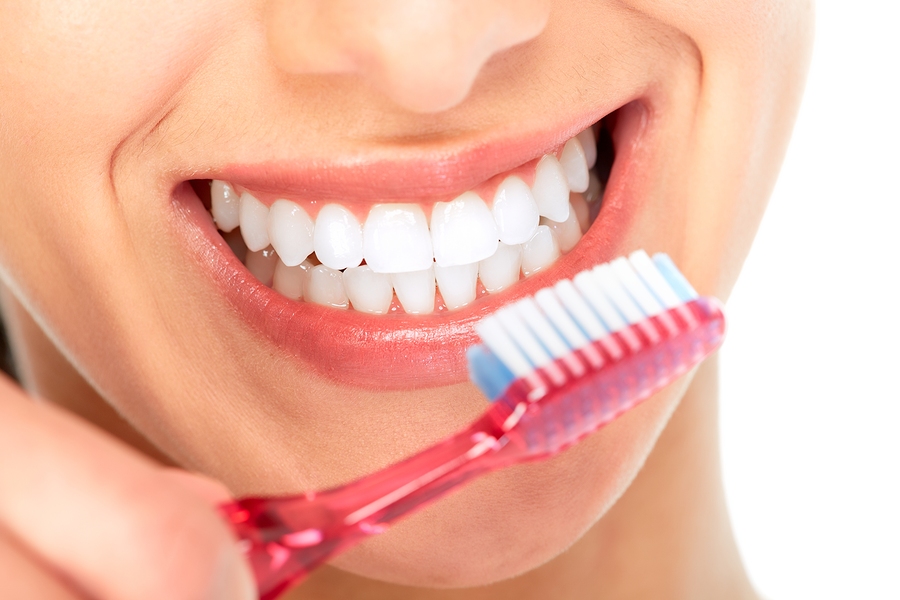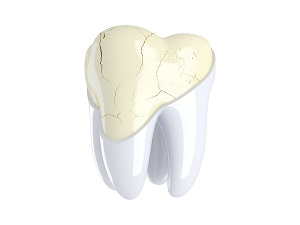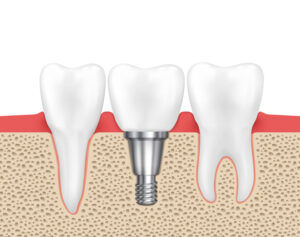
by Dr. Jacqueline S. Allen | Jan 18, 2017 | Blog, Dentistry, Endodontics, Endodontist, Phoenix Endodontic Group
 When we make an appointment to see an endodontist, there is usually a pressing reason to do so: an infected tooth needs a root canal, a tooth has been dislodged or knocked out and needs to be placed back in the mouth, etc. While we can’t always avoid situations that lead us to needing endodontic treatment, there are actions we can take that will lower our risk of suffering infected or damaged teeth. Here are a few dental care tips to get your new year off to a great start.
When we make an appointment to see an endodontist, there is usually a pressing reason to do so: an infected tooth needs a root canal, a tooth has been dislodged or knocked out and needs to be placed back in the mouth, etc. While we can’t always avoid situations that lead us to needing endodontic treatment, there are actions we can take that will lower our risk of suffering infected or damaged teeth. Here are a few dental care tips to get your new year off to a great start.
Dental Care Tips for 2017: Priorities for Protecting Your Teeth!
- Prevent tooth decay. Help your natural teeth remain strong by protecting them from plaque by brushing twice daily and flossing once a day. The way your toothbrush is held makes a difference as to how effective your brushing is. The right way to brush your teeth is by holding your toothbrush at a small angle against your teeth. Don’t brush too hard – that just irritates your gums.
- Take care of your gums. Speaking of gums, if you skip out on building a daily oral hygiene regimen and don’t show up for your regular dental check-ups – which gives dental professionals a chance to examine the state of your oral health and clean your teeth thoroughly – you may end up with a gum disease such as gingivitis or periodontitis. Gum diseases produce almost no outward symptoms until they are quite advanced, so it’s important to focus on prevention and receiving regular dental care.
- Protect your teeth from damage. There’s a lot you can do to prevent your teeth from becoming damaged. First and foremost, if you play a contact sport, use a mouth guard. Teeth can also become cracked or chipped through grinding one’s teeth (bruxism), or biting down on a food such as nuts or hard candy. Sometimes the damage to your teeth is not visible to the naked eye; it’s always a good idea to have your dentist examine your teeth if you have symptoms such as only being able to chew on one side of your mouth due to pain, or having a tooth that’s extra sensitive to hot or cold foods.
“Even though proper dental care can’t guarantee that you won’t need to see an endodontist in 2017, it will improve your dental health overall, and that should help you bounce back from any challenges to your teeth that might come your way,” says Dr. Allen, who practices with the Phoenix Endodontic Group.

by Dr. Jacqueline S. Allen | Dec 7, 2016 | Blog, Cracked Teeth, Endodontics, Endodontist
 There are several different types of cracks that teeth can develop and they have a wide variety of symptoms. The most common symptom that you may have a tooth that is cracked is unpredictable pain with chewing especially with the release of the biting pressure. Some patients experience pain with hot or cold, while others may continue to only have occasional biting sensitivity. In many cases, the pain is very episodic and can refer to other areas of the mouth, which may make it difficult for the patient and the dentist, to determine which tooth is the source of the discomfort.
There are several different types of cracks that teeth can develop and they have a wide variety of symptoms. The most common symptom that you may have a tooth that is cracked is unpredictable pain with chewing especially with the release of the biting pressure. Some patients experience pain with hot or cold, while others may continue to only have occasional biting sensitivity. In many cases, the pain is very episodic and can refer to other areas of the mouth, which may make it difficult for the patient and the dentist, to determine which tooth is the source of the discomfort.
Because there are various types of cracked teeth and the severity of the crack determines which treatment is best for the patient.
- A cracked tooth implies that a crack in the hard, exterior portion of the tooth has extended internally. If the crack does not affect the pulp, then a crown will be needed to save the tooth. If the pulp is affected, then a root canal procedure and a crown will be necessary. If the crack extends past the pulp and into the root structure below the bone, then the tooth should, in most cases, be removed.
- A split tooth is often the result of a long-standing crack that was never treated and therefore creates distinct segments that can be separated. The tooth cannot be saved intact, but depending on the position of the crack, a portion of the tooth may be saved with a root canal procedure.
A vertical root fracture is one that starts in the root structure and extends toward the chewing surface. These teeth rarely show symptoms and therefore, can sometimes go unnoticed until the surrounding gum tissue and bone become infected. The majority of these teeth must be extracted due to the prolonged progression of disease by the time the issue is discovered.
A cracked tooth does not only affect the surface. Several layers of a tooth can be victims of the crack, depending on the size. Under the outer, hard, white layer of enamel, is a softer substance called dentin and inside of that, is the dental pulp, which contains the nerves and blood vessels and is what is removed during a root canal procedure. A cracked tooth is painful because when the outer hard tissues of the tooth are cracked, chewing on it can cause the pieces to move which can irritate the pulp. Eventually the repeated stress on the pulp will damage it irreparably. This will lead eventually to is death and infection to the tooth, and possibly the surrounding gum and bone.
Unfortunately, cracks in teeth do not heal; even when treated, they may continue to progress and separate, which may result in the loss of the tooth. Placing a crown on a cracked tooth is the best way to provide maximum protection, but is no guarantee that the treatment will be successful, long-term. However, once these teeth are treated properly and in a timely fashion, they can continue to function for a lifetime.
Cracking a tooth may not always be preventable, but there are some things that you can do to help make your teeth less susceptible to cracks.
- Avoid chewing on extremely hard objects, such as ice, popcorn kernels that are unpopped, hard candy or other extremely hard objects.
- Avoid clenching or grinding your teeth if you are aware.
- If you clench or grind your teeth at night when it is impossible to control, discuss a professional night guard or retainer with your dentist.
- Always wear a protective guard when engaging in contact sports.
The overall outcome for the tooth, and the type of treatment necessary to help save it, varies, depending on type, location and extent of the crack. If a patient is concerned that they may have a cracked tooth, it is imperative to see your endodontist (this is someone who specializes in saving cracked teeth) as soon as possible. The more time that passes without treatment, the greater the risk of the fracture growing in size and spreading into the root, which would necessitate an extraction of the tooth.

by Dr. Jacqueline S. Allen | Dec 5, 2016 | Blog, Endodontics, Endodontist, Phoenix Endodontic Group
 At Phoenix Endodontic Group, we believe that our staff is what makes our practice so special! As a part of our employee spotlight series, this month, we are highlighting the work of our C.E.O. and Operations Manager, Kevin Conroy!
At Phoenix Endodontic Group, we believe that our staff is what makes our practice so special! As a part of our employee spotlight series, this month, we are highlighting the work of our C.E.O. and Operations Manager, Kevin Conroy!
Q: Tell us a little about yourself—where are you from? Where did you get your degree?
A: I am originally from New York, but I have also lived in Virginia. I got my degree from James Madison University in Harrisonburg, Virginia.
Q: Have you always worked in the dental industry?
A: No, I used to be work for corporate finance at AT&T Capital and Wells Fargo financial leasing.
Q: How did you end up at Phoenix Endodontic Group?
A: My wife is Dr. Allen, and she wanted to grow the business, so I joined on. I serve as the C.E.O. and Operations Manager here at Phoenix Endodontic Group.
Q: What is your favorite part of working at Phoenix Endodontic Group?
A: No two days are ever the same here! I also love using state-of-the-art technology in order to deliver the very best services to our patients.
Q: What is a piece of advice you would offer to patients?
A: Don’t fear the endodontist! The process is not painful for most people.
Q: What is the most rewarding aspect of working at Phoenix Endodontic Group?
A: We treat our patients and referring offices the way we wish to be treated. We value integrity, honesty, and providing the finest endodontic care found anywhere.
Our team will restore your smile and heal you of pain. To learn more about our practice, or to schedule an appointment, call (602) 748-4190, or visit our website.

by Dr. Jacqueline S. Allen | Oct 24, 2016 | Blog, Dental Implants, Endodontics, Root Canal
 Dental implants have been offered in recent years as a panacea for fixing the problem of ailing teeth. However, the reality when it comes to treating a badly injured or infected tooth is more complex. Both endodontic procedures such as root canals and dental implants have their proper place – your dental care team can help determine what treatment will be most effective for you.
Dental implants have been offered in recent years as a panacea for fixing the problem of ailing teeth. However, the reality when it comes to treating a badly injured or infected tooth is more complex. Both endodontic procedures such as root canals and dental implants have their proper place – your dental care team can help determine what treatment will be most effective for you.
Here are four common myths related to dental implants, and the factual situation in each case.
Myths related to dental implants and root canal treatments
Myth #1: The best thing to do in all cases with an injured or infected tooth is to replace it with a dental implant.
There are a range of factors that will determine if a dental implant or a root canal is the best way to proceed. Although dental implants would appear at first glance to permanently resolve the issue with a troubled tooth, they can also cost more and require more visits to the dentist to complete. Most root canal treatments, which remove inflamed pulp and clean, fill and seal the inside of the tooth, can be accomplished in a single visit and are virtually painless.
Myth #2: Dental implants have a higher success rate than root canals.
A number of studies have shown both dental implants and root canals can have success rates of more than 95 percent. Currently, both procedures are considered excellent choices for treating an ailing tooth, and decisions to go with one procedure over the other should be based on factors related to an individual’s unique situation.
Myth #3: If you have a root canal and it fails, you need to have an extraction done and a dental implant placed.
Not necessarily. Root canals can fail for reasons that include damage to the crown protecting the treated tooth, additional tooth decay, or hidden canals that were not properly cleaned and filled the first time. However, endodontic retreatments of root canals can successfully restore the natural tooth to health in as many as 75% – 88% of all cases.
Myth #4: Your endodontist can’t help you if you need an implant.
Actually, the American Association of Endodontists has released a position statement affirming that if a endodontist determines a tooth must be extracted and a dental implant placed, he or she may proceed with the extraction and the placement of the implant if it is in the best interest of the patient.
“The decision whether to save a natural tooth or to proceed with an extraction and dental implant can be a difficult one,” says Dr. Jacqueline S. Allen, who practices with the Phoenix Endodontic Group. “Your endodontist can help you sort through your options and make the best decision for your individual health needs.”

by Dr. Jacqueline S. Allen | Oct 17, 2016 | Blog, Endodontics, Phoenix Endodontic Group
 At Phoenix Endodontic Group, we believe our staff is what makes our practice so successful! As part of our employee spotlight series, this month, we are highlighting Dallas Clary, one of our dental assistants! With over 17 years of experience in dentistry, she loves to disprove the negative reputation and impressions of endodontics and root canal procedures many patients have prior to treatment. Read on to learn more about Dallas!
At Phoenix Endodontic Group, we believe our staff is what makes our practice so successful! As part of our employee spotlight series, this month, we are highlighting Dallas Clary, one of our dental assistants! With over 17 years of experience in dentistry, she loves to disprove the negative reputation and impressions of endodontics and root canal procedures many patients have prior to treatment. Read on to learn more about Dallas!
Q: Tell us a little bit about yourself—where are you from? What hobbies do you enjoy?
A: I grew up in Eagar, AZ. I got my dental assisting degree from White Mountain School of Dental Assisting in Linden, AZ. As for hobbies, I love crafting, and Pinterest definitely inspires me!
Q: Did you always want to work in the dental industry? How did you end up at Phoenix Endo?
A: My mother worked in a dental office when I was growing up, so I guess I followed in her footsteps. Since I’ve worked in the endodontic industry for so long, I looked for an office closer to home, and fortunately, Phoenix Endo was looking for a dental assistant.
Q: What is your favorite part of working at Phoenix Endo?
A: I love helping patients have a comfortable and enjoyable experience during a root canal. It gives me great satisfaction to disprove the bad reputation that root canals have been given. Since they relieve the patient of pain, root canals shouldn’t be thought of negatively.
Q: What do you admire most about Dr. Allen?
A: Dr. Allen is so generous and truly cares for her patients and those in need. She spends tireless hours in and out of the office providing treatment to people.
Q: What are the most rewarding aspects of working at Phoenix Endo?
A: We have great doctors and a great team! We all work very hard to make sure that our patients have a great experience, despite the fact that they are having root canal treatment.
Tune in next month for to get to know another member of our team!

by Dr. Jacqueline S. Allen | Oct 12, 2016 | Blog, Endodontics, Root Canal
 Endodontically treated teeth can last a lifetime. Some of these teeth, however, may not heal properly or may develop new problems months, or even years, after they were initially treated. An additional endodontic treatment, called a retreatment (a second root canal procedure), can be performed, which could again, allow a patient to keep his or her tooth for a lifetime.
Endodontically treated teeth can last a lifetime. Some of these teeth, however, may not heal properly or may develop new problems months, or even years, after they were initially treated. An additional endodontic treatment, called a retreatment (a second root canal procedure), can be performed, which could again, allow a patient to keep his or her tooth for a lifetime.
Root canal treatment is like any other medical or dental procedure. It may not heal or respond to treatment, as expected for many different reasons:
- Often times, the permanent or temporary restoration may not have prevented salivary contamination inside the tooth.
- There may have been an extended period of time between when the crown or other restoration was placed, and when the root canal treatment was completed. Most endodontists and studies agree that a definitive restoration should be placed within one month following an endodontic procedure.
- There may be canals that were undetected, or canals that were too narrow, or calcified, to negotiate for the original practitioner.
There are occasions when a new problem arises with a tooth that has been treated previously that may compromise the original endodontic procedure:
- If a tooth develops a vertical fracture after endodontic therapy, it is no longer a viable tooth to keep in the oral cavity.
- A new cavity could develop in the tooth and expose the root canal to recontamination with bacteria.
- The restoration that was placed in or on the tooth after the endodontic treatment was complete can break down, creating microleakage of bacteria into the canals, which can cause recontamination.
Before endodontic retreatment is started, the endodontist may want to take a CBCT of the tooth. A CBCT is a 3-dimensional X-ray that allows the endodontist to look at the tooth in all planes to help diagnose a pattern of bone loss that may be indicative of a vertical fracture, canal anatomy that may not have been addressed in the original endodontic therapy, and other factors that will help your endodontist determine the best treatment for the tooth.
Even though a CBCT may offer more information about why a retreatment may be necessary, sometimes the endodontist must go back into the tooth and look for a potential cause that prevented the original root canal from healing.
A retreatment procedure consists of removal of the original contents of the crown and canals and exploration of the tooth and internal root structure that remains. If any canals were missed, they are addressed at that time. If a fracture exists, then the tooth will ultimately need an extraction, and may be removed at that time or may be removed at some point in the future by another practitioner. Once these issues are addressed, and once the canals are free of their filling material, they are disinfected, and an antibacterial paste is placed in each of them. This paste may be left in the tooth for several weeks until the tooth is symptom-free, and all other clinical signs of infection have disappeared. At that point, the patient returns, and the root canals would once again be filled with the endodontic filling material and a restoration crown would top the tooth. Most endodontists will evaluate the tooth for proper healing for several years after a retreatment is performed.
Although the goal of primary endodontic therapy is to save the natural tooth for a lifetime, there may be factors that can affect that overall outcome. When this happens, other treatments can save a natural tooth for a lifetime.

 When we make an appointment to see an endodontist, there is usually a pressing reason to do so: an infected tooth needs a root canal, a tooth has been dislodged or knocked out and needs to be placed back in the mouth, etc. While we can’t always avoid situations that lead us to needing endodontic treatment, there are actions we can take that will lower our risk of suffering infected or damaged teeth. Here are a few dental care tips to get your new year off to a great start.
When we make an appointment to see an endodontist, there is usually a pressing reason to do so: an infected tooth needs a root canal, a tooth has been dislodged or knocked out and needs to be placed back in the mouth, etc. While we can’t always avoid situations that lead us to needing endodontic treatment, there are actions we can take that will lower our risk of suffering infected or damaged teeth. Here are a few dental care tips to get your new year off to a great start.


 At Phoenix Endodontic Group, we believe that our staff is what makes our practice so special! As a part of our employee spotlight series, this month, we are highlighting the work of our C.E.O. and Operations Manager, Kevin Conroy!
At Phoenix Endodontic Group, we believe that our staff is what makes our practice so special! As a part of our employee spotlight series, this month, we are highlighting the work of our C.E.O. and Operations Manager, Kevin Conroy!
 Dental implants have been offered in recent years as a panacea for fixing the problem of ailing teeth. However, the reality when it comes to treating a badly injured or infected tooth is more complex. Both endodontic procedures such as root canals and dental implants have their proper place – your dental care team can help determine what treatment will be most effective for you.
Dental implants have been offered in recent years as a panacea for fixing the problem of ailing teeth. However, the reality when it comes to treating a badly injured or infected tooth is more complex. Both endodontic procedures such as root canals and dental implants have their proper place – your dental care team can help determine what treatment will be most effective for you.
 At Phoenix Endodontic Group, we believe our staff is what makes our practice so successful! As part of our employee spotlight series, this month, we are highlighting Dallas Clary, one of our dental assistants! With over 17 years of experience in dentistry, she loves to disprove the negative reputation and impressions of endodontics and root canal procedures many patients have prior to treatment. Read on to learn more about Dallas!
At Phoenix Endodontic Group, we believe our staff is what makes our practice so successful! As part of our employee spotlight series, this month, we are highlighting Dallas Clary, one of our dental assistants! With over 17 years of experience in dentistry, she loves to disprove the negative reputation and impressions of endodontics and root canal procedures many patients have prior to treatment. Read on to learn more about Dallas!
 Endodontically treated teeth can last a lifetime. Some of these teeth, however, may not heal properly or may develop new problems months, or even years, after they were initially treated. An additional endodontic treatment, called a retreatment (a second root canal procedure), can be performed, which could again, allow a patient to keep his or her tooth for a lifetime.
Endodontically treated teeth can last a lifetime. Some of these teeth, however, may not heal properly or may develop new problems months, or even years, after they were initially treated. An additional endodontic treatment, called a retreatment (a second root canal procedure), can be performed, which could again, allow a patient to keep his or her tooth for a lifetime.